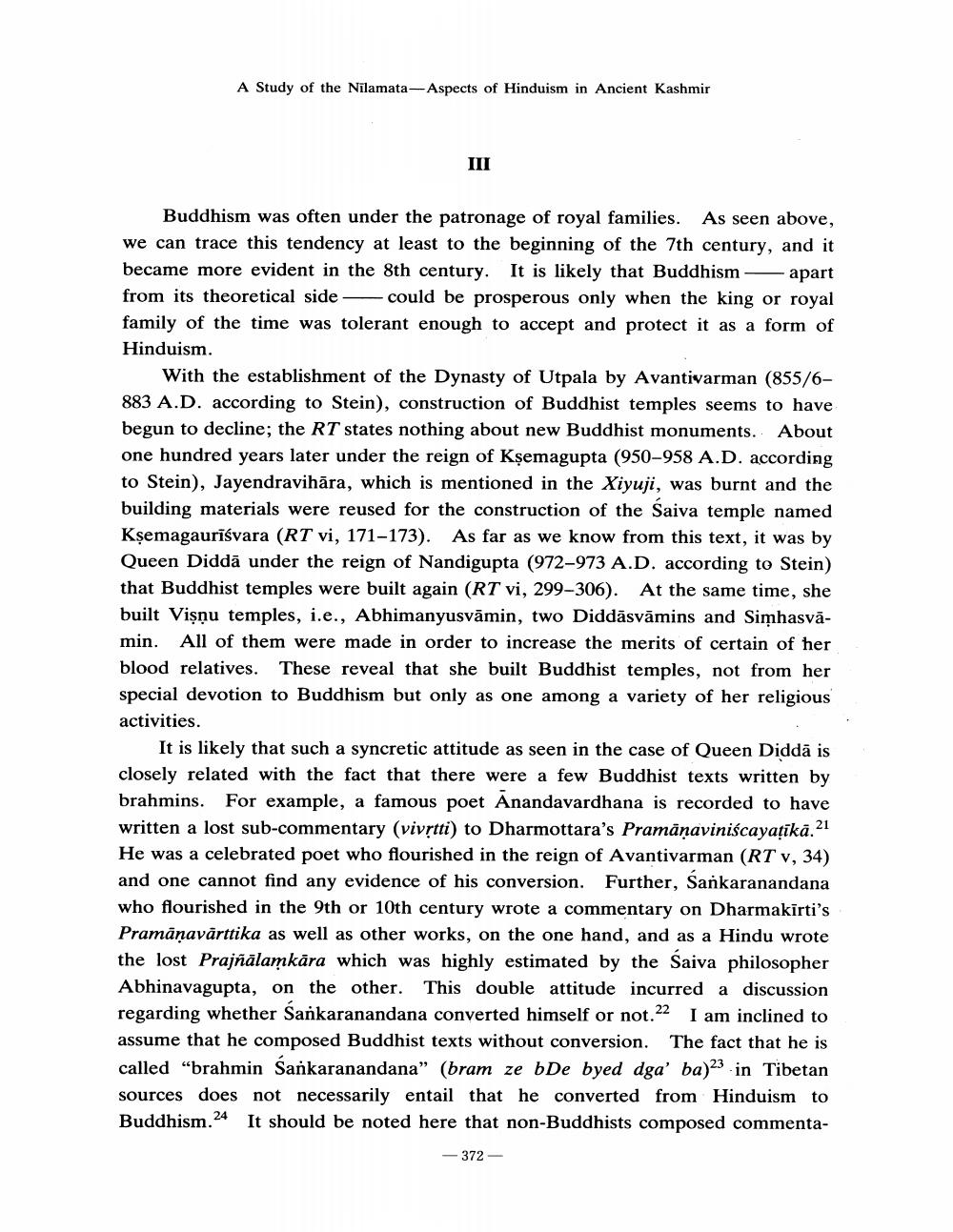Book Title: Remarks On Religious Predominance In Kashmir Hindu Or Buddhist Author(s): Toru Funayama Publisher: Toru Funayama View full book textPage 6
________________ A Study of the Nilamata-Aspects of Hinduism in Ancient Kashmir III Buddhism was often under the patronage of royal families. As seen above, we can trace this tendency at least to the beginning of the 7th century, and it became more evident in the 8th century. It is likely that Buddhism apart from its theoretical side could be prosperous only when the king or royal family of the time was tolerant enough to accept and protect it as a form of Hinduism. With the establishment of the Dynasty of Utpala by Avantivarman (855/6883 A.D. according to Stein), construction of Buddhist temples seems to have. begun to decline; the RT states nothing about new Buddhist monuments. About one hundred years later under the reign of Kşemagupta (950-958 A.D. according to Stein), Jayendravihāra, which is mentioned in the Xiyuji, was burnt and the building materials were reused for the construction of the Saiva temple named Kṣemagauriśvara (RT vi, 171-173). As far as we know from this text, it was by Queen Didda under the reign of Nandigupta (972-973 A.D. according to Stein) that Buddhist temples were built again (RT vi, 299-306). At the same time, she built Visņu temples, i.e., Abhimanyusvāmin, two Diddāsvāmins and Simhasvamin. All of them were made in order to increase the merits of certain of her blood relatives. These reveal that she built Buddhist temples, not from her special devotion to Buddhism but only as one among a variety of her religious activities. It is likely that such a syncretic attitude as seen in the case of Queen Didda is closely related with the fact that there were a few Buddhist texts written by brahmins. For example, a famous poet Anandavardhana is recorded to have written a lost sub-commentary (vivṛtti) to Dharmottara's Pramāṇaviniścayaṭikā. He was a celebrated poet who flourished in the reign of Avantivarman (RT v, 34) and one cannot find any evidence of his conversion. Further, Sankaranandana who flourished in the 9th or 10th century wrote a commentary on Dharmakirti's Pramāṇavārttika as well as other works, on the one hand, and as a Hindu wrote the lost Prajñalamkara which was highly estimated by the Saiva philosopher Abhinavagupta, on the other. This double attitude incurred a discussion regarding whether Sankaranandana converted himself or not.22 I am inclined to assume that he composed Buddhist texts without conversion. The fact that he is called "brahmin Sankaranandana" (bram ze bDe byed dga' ba)23 in Tibetan sources does not necessarily entail that he converted from Hinduism to Buddhism.24 It should be noted here that non-Buddhists composed commenta -372Page Navigation
1 ... 4 5 6 7 8 9
